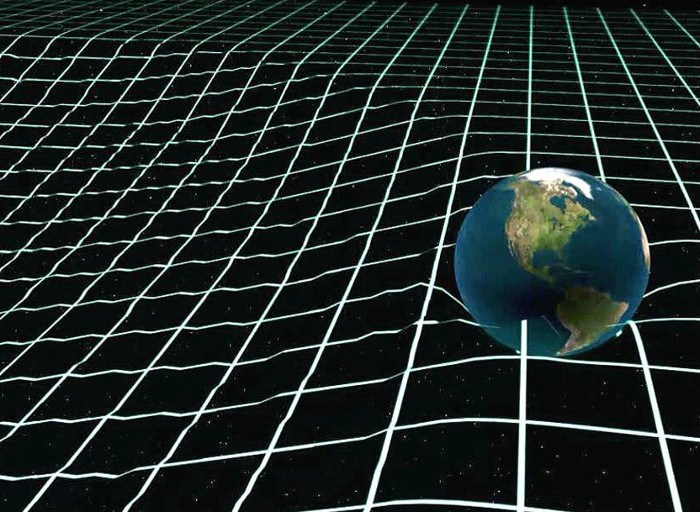A mathematician has just announced an unprecedented invention: Creating gravity
So far, such a progress is called a science fiction dream.
In the universe there are 4 basic interactions: gravity, electromagnetic force, strong force and weak force . In particular, the gravitational force is the last interaction that humans have not yet found a way to produce and control.
However, in recent times, the physics community has exaggerated rumors that scientists have finally discovered gravitational waves. Those are ripples that show the timeless bend that Einstein predicted 100 years ago.
Along with that, André Füzfa, a mathematics professor from the University of Namur, Belgium, published a scientific article about devices that can help us create and control gravity. Despite the fascinating interaction that Andre Füzfa promises only at a very weak level, this device does not require any new technology. We can build it right away.

Describe how space time bends according to Einstein's theory.
First of all, it must be confirmed again, the fascinating interaction that we are talking about in the new study is extremely small. It is not so "illusion" as artificial gravity , which helps Star Trek characters to travel on space ships exactly the same way as on the ground.
Even so, producing weak gravity will also be a breakthrough. It allows physicists for the first time to study gravity gravitationally. Einstein's general theory of relativity will be thoroughly examined. And this also leads to new technologies, such as the transmission of gravity information instead of electromagnetic waves.
"For many reasons, studying gravity is an activity that takes a long time to think about. Physicists limit them to existing natural gravitational resources," Füzfa wrote in the article. "Creating an artificially attractive field, being able to turn on and off at will is the key to science fiction".
The device Füzfa proposed was based on a superconducting superconducting electromagnet . We can find it right in the Large Hadron Collider particle accelerator of the European Atomic Research Organization (CERN). It helps physicists control a strong magnetic field and observes how space is bent.
Füzfa's method has so far not been tested experimentally. However, he used mathematical methods to convince its feasibility. All calculations are publicly available to any scientist who tests and reviews in Physical Review D.

A superconducting electromagnet of the Large Hadron Collider particle accelerator.
In fact, creating and controlling weak gravity is not something too far away. It could be done based on the same principle that Einstein himself should have in general relativity. He said all things have masses and all kinds of energy produce and are affected by gravity in the same way.
That means that electromagnetic fields, in theory, can bend space-time, just like how a planet is doing. Only these curves are extremely small. We will not be able to experiment on Earth and discover them.
Füzfa's new work is simply to use mathematics to propose a weak gravitational field. Accordingly, it is possible to use multiple super sensitive interferometers on a large superconducting magnet. Physicists will be able to exploit information to study the fascinating field from there.

Mathematics professor André Füzfa, Namur University, Belgium.
Now, the biggest problem is just whether a research organization will pay a huge investment, just check the super-weak gravity in Füzfa's way? The construction equipment is expected to be very expensive. In return, controlling the ultimate force can eventually bring a new Nobel prize.
"So far, such a progress is called a science fiction dream, but it can open up many new applications. For example, using gravitational waves for communications , " Dai said. said from Namur University. "Imagine you can make phone calls on the other side of the world without any satellite or ground wave station."
- The life and career of actor and mathematician Hedy Lamarr
- Control gravity as you like
- Gravity, gravity and things we still think
- Invention helps people look in the dark
- YouTube - Best invention in 2006
- Romanian mathematician uses a secret formula to win the lottery 14 times
- Mathematician Canada Langlands was awarded the Abel Math Prize 2018
- We are all born with the mathematician's brain, whether you realize it or not
- Russia built anti-gravity engines
- What did NASA do with animals and plants on orbit?
- Video: Robot moves on all surfaces
- A mathematician just solved the 160-year-old problem worth $ 1 million
 Daily use inventions come from universities
Daily use inventions come from universities Special weight loss device helps prevent appetite
Special weight loss device helps prevent appetite 8 inventors were killed by their own inventions
8 inventors were killed by their own inventions Iran invented a motor car powered by water
Iran invented a motor car powered by water